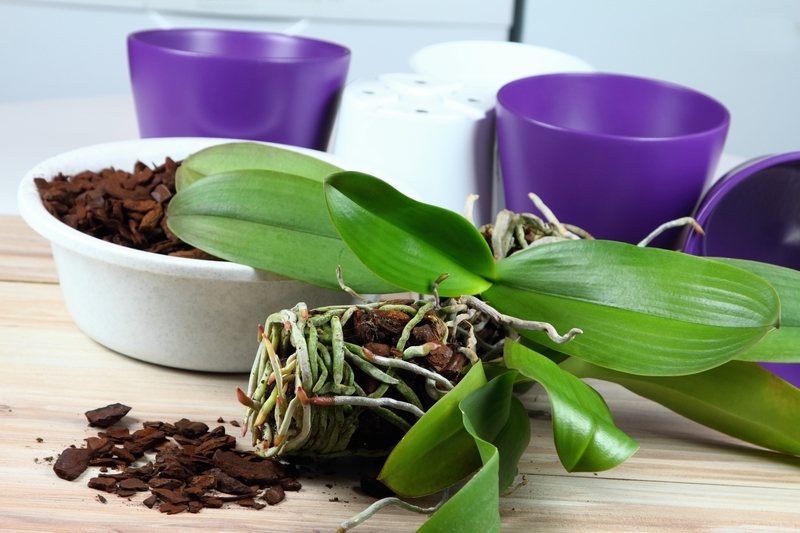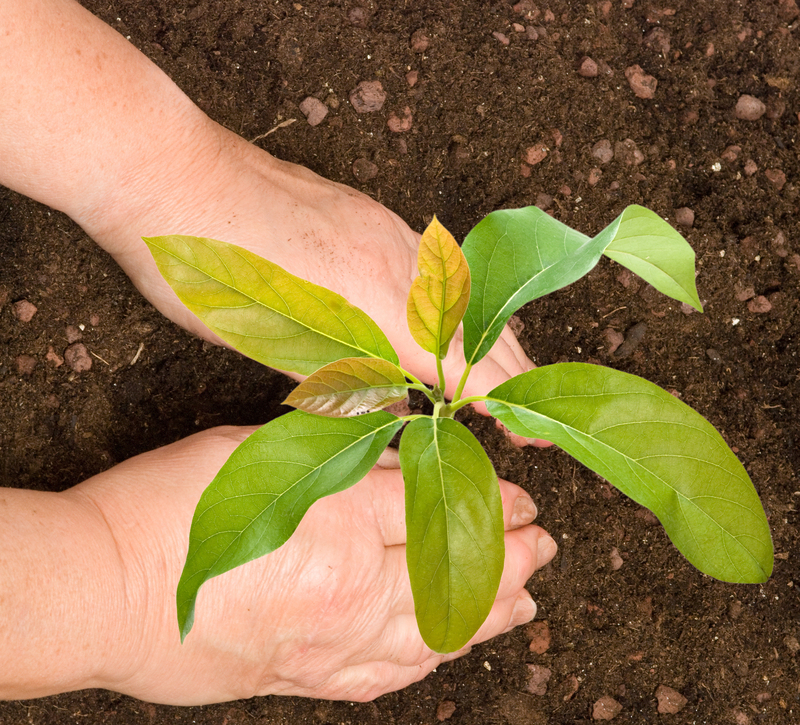How a Simple Garden Can Make Big Impacts on Climate Change
Posted on 17/09/2025
How a Simple Garden Can Make Big Impacts on Climate Change
Climate change is an urgent global issue that affects every corner of the planet. While it may seem overwhelming to tackle such a vast problem, the reality is that even small, localized actions can have a significant effect. One such example is gardening. In fact, a simple garden can make a tremendous impact in reducing greenhouse gases, preserving biodiversity, and promoting eco-friendly living. This comprehensive guide will explore how a home garden can help fight climate change, provide actionable tips, and highlight the remarkable benefits for both the environment and our communities.
Understanding the Link Between Gardening and Climate Change
Climate change is primarily driven by excessive emission of greenhouse gases, like carbon dioxide (CO2), methane, and nitrous oxide. Human activities--especially those related to industrial agriculture, transportation, and deforestation--are major contributors. But did you know that gardening at home or in community spaces can help store carbon, support biodiversity, improve air quality, and foster sustainability?
Key Environmental Benefits of Having a Simple Garden
- Carbon Sequestration: Plants absorb CO2 during photosynthesis, helping to reduce greenhouse gases.
- Boosting Local Biodiversity: Gardens create habitats for pollinators, birds, and other wildlife.
- Mitigating Urban Heat: Green spaces help reduce heat in cities by providing shade and cooling through evaporation.
- Improved Soil Health: Gardening methods can rebuild soil structure, prevent erosion, and enhance water retention.
- Reduction of Food Miles: Growing your own food reduces the carbon footprint associated with transportation and packaging.
- Waste Reduction: Composting organic waste recycles nutrients instead of sending them to landfills.

How Simple Gardens Contribute to Climate Solutions
1. Capturing Carbon Through Photosynthesis
Plants in your garden act as small-scale carbon sinks. Through photosynthesis, they absorb CO2 from the atmosphere and store it as biomass in leaves, stems, and roots. Healthy soil and perennial plants, such as shrubs and trees, can lock away carbon for years, making your backyard or community plot part of the climate solution.
2. Improving Soil Quality and Carbon Storage
Soil is a powerful carbon store--even more significant than the world's forests. When you practice sustainable gardening techniques like no-dig gardening, mulching, or cover cropping, you prevent soil disturbance and encourage carbon to stay bound in the earth. Moreover, healthy soil supports microbial life that further solidifies carbon retention.
Did you know? According to scientists, just a 0.4% annual increase in soil organic carbon content can significantly help offset global CO2 emissions!
3. Regenerating Biodiversity in Urban and Rural Areas
Plant diversity in gardens provides vital habitats and food sources for pollinators like bees, butterflies, and birds, many of which are under threat due to intensive agriculture and habitat loss. By growing native and pollinator-friendly species, you create a haven for wildlife and help maintain ecological balance.
4. Reducing Your Carbon Footprint by Growing Food Locally
The average meal travels over 1,500 miles from farm to plate--generating enormous emissions along the way. By even modestly producing your own fruits, vegetables, and herbs, you cut down on transportation emissions, packaging waste, and food spoilage.
- Homegrown vegetables can be harvested fresh, reducing refrigeration needs.
- Growing your own food supports seasonal eating and better nutrition.
- Gardens can encourage a plant-based diet, which typically has a lower environmental impact than animal products.
5. Promoting Sustainable Living Through Composting
Composting is a simple gardening practice with outsized climate benefits. Each year, millions of tons of food waste end up in landfills, where it generates methane--a potent greenhouse gas. By composting your kitchen scraps and yard waste, you:
- Reduce landfill methane emissions
- Create natural fertilizer for your garden, replacing the need for chemical inputs
- Enhance the soil's ability to store carbon
6. Cooling Urban Environments
Urban areas often experience the heat island effect, causing increased demand for air conditioning and elevated carbon outputs. Green gardens and shaded landscapes reduce local temperatures, save energy, and provide crucial relief to residents during heatwaves.
Practical Steps: How to Make Your Garden a Climate Hero
Choose Climate-Friendly Plants
Select native and drought-resistant plants that thrive in your region with minimal extra water or fertilizers. These plants typically require fewer resources and provide better support to local ecosystems.
- Research which native flowers, shrubs, or trees provide food and shelter for pollinators in your area.
- Include edible perennials like berry bushes, fruit trees, or asparagus for longer-term carbon storage.
- Rotate crops and diversify plantings to support soil health and biodiversity.
Practice Organic and No-Till Gardening
Avoid synthetic pesticides and fertilizers. They not only consume fossil fuels in their production but can also degrade soil and water quality. Instead, enrich your soil naturally--add compost, mulch, and green manure to encourage carbon accumulation and soil life.
No-till or no-dig methods reduce soil disturbance, protecting stored soil carbon and beneficial organisms.
Capture and Conserve Water
Smart watering techniques make your garden more resilient and eco-friendly:
- Install rain barrels to harvest rainwater for irrigation
- Use soaker hoses or drip irrigation to minimize evaporation
- Mulch plant beds to retain soil moisture and enrich organic matter
Compost and Recycle Organics
Start a compost pile or bin and recycle kitchen scraps, yard clippings, and leaves. As compost matures, use it to fertilize your plants--improving both soil fertility and its carbon storage capacity.
Create Wildlife Havens
A diverse garden attracts beneficial insects and birds, keeping pest populations in check and fostering pollination.
- Plant flowers that bloom in different seasons to support pollinators year-round
- Provide nesting boxes, insect hotels, or water sources for birds and beneficial insects
The Social and Community Benefits of Simple Gardens
Gardens don't just benefit the planet--they uplift communities and individuals. Shared community gardens provide access to fresh produce, green space, and opportunities for collaboration, particularly in urban neighborhoods where such resources are scarce.
- Gardening brings neighbors together and fosters local stewardship.
- Accessible gardens combat food insecurity and promote well-being.
- Outdoor green spaces support mental health and physical fitness.
Beyond the Backyard: Gardens as Part of a Global Climate Solution
While individual gardens may seem modest, the cumulative effect of millions of people gardening sustainably is profound. In cities like Paris, London, and New York, urban gardening initiatives have collectively cooled city blocks, increased pollinator populations, and provided thousands of pounds of fresh food.
- Rooftop and vertical gardens in cities can significantly boost green cover and reduce building energy use.
- School gardens teach the next generation about environmental stewardship and responsible food systems.
The power of gardening to fight climate change is magnified when policies support green infrastructure, urban agriculture, and biodiversity corridors.
Common Misconceptions About Gardening and Climate
"One garden can't make a difference."
Collective action is the key. Every garden, regardless of size, contributes positively to the local and global environment. Encouraging others amplifies your impact exponentially.
"Gardening is only for rural areas or people with big yards."
Even a balcony, windowsill, or container garden can grow food and flowers, sequester carbon, and support pollinators. Don't underestimate the power of a simple herb box or vertical planter.

Simple Garden Ideas for Maximum Climate Impact
- Raised beds: Optimize space, soil quality, and water use in small areas.
- Vertical gardening: Use trellises and wall planters for climbing plants and maximize green coverage.
- Edible landscaping: Incorporate berry bushes, fruit trees, and perennial vegetables into your home landscape.
- Wildflower patches: These low-maintenance mini-meadows are pollinator magnets and help regenerate soil.
- Rain gardens: Direct rain run-off into planted beds that filter water and reduce localized flooding.
Conclusion: Start Your Climate-Friendly Garden Today
Small changes at home can drive big shifts in our collective fight against climate change. By cultivating even a simple garden, you are storing carbon, regenerating soil and biodiversity, and inspiring local climate action. Whether you have a tiny balcony or a large backyard, your efforts matter.
- Choose plants with purpose--favor natives and pollinator-friendly varieties.
- Avoid synthetic chemicals--a healthy ecosystem is the best defense against pests and disease.
- Compost and mulch for a carbon-rich, vibrant garden that gives back to the planet.
- Share your gardening knowledge and encourage others, multiplying your impact on the climate.
Together, let's turn the simple act of gardening into a powerful tool for climate resilience and a greener, healthier future for all.

